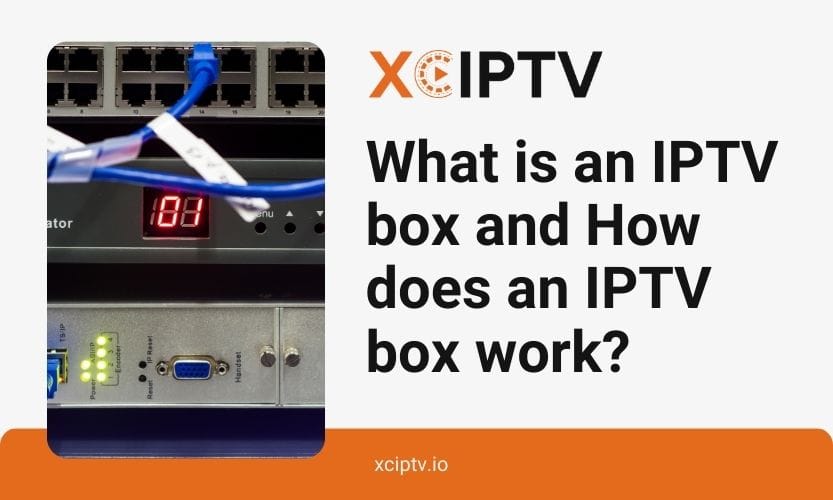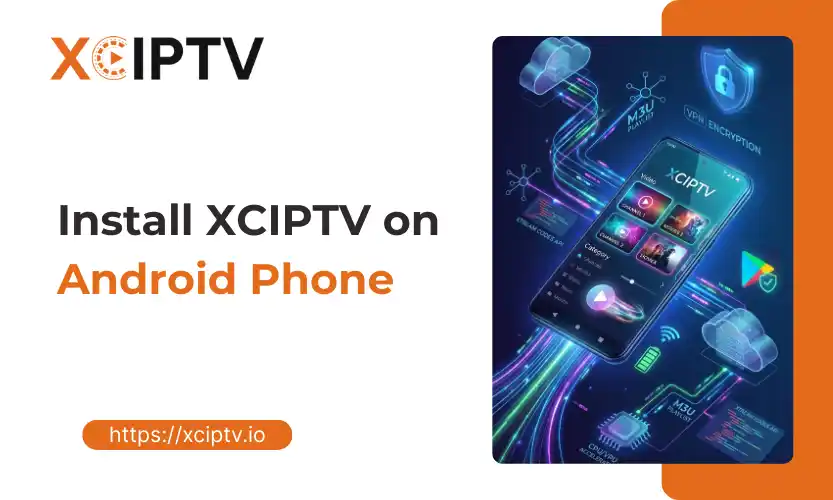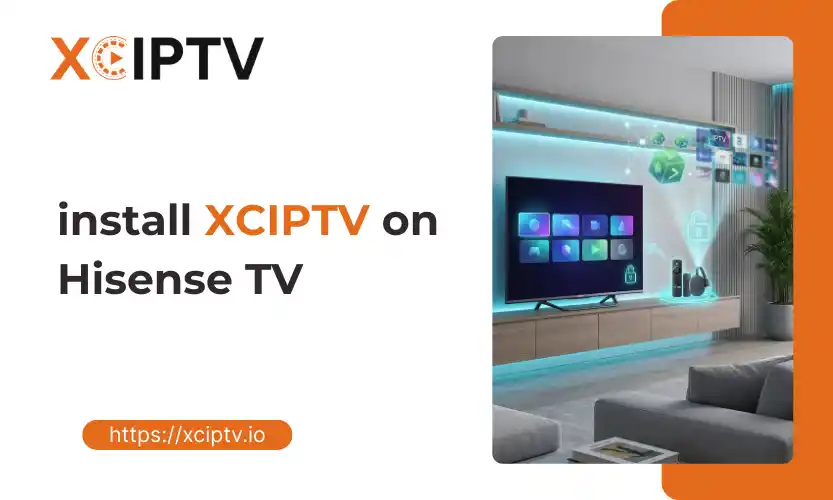IPTV Box: What It Is and How It Works
An IPTV box, also known as a set-top box, revolutionizes how we watch television. This small yet powerful gadget allows users to access a wide range of television content streamed over the internet. Unlike traditional cable or satellite TV, IPTV (Internet Protocol Television) delivers programming through Internet protocols, offering viewers more flexibility and control over their entertainment choices.
IPTV boxes serve as the bridge between the digital world of internet-based content and your television screen. They receive digital signals transmitted over the internet and convert them into a format that your TV can display. This technology opens up a world of possibilities, from live TV channels to on-demand movies and shows, all accessible through a single device.
How IPTV Boxes Function
IPTV boxes operate on a fundamentally different principle compared to traditional TV receivers. Here’s a breakdown of their core functionality:
Signal Reception and Processing
When you turn on your IPTV box and select a channel or program, the device sends a request to the IPTV service provider’s servers. These servers host vast content libraries, including live TV streams, movies, and TV shows. The requested content is then transmitted over the internet as data packets.
The IPTV box receives these data packets and begins the crucial decoding process. It assembles the packets in the correct order and converts them into audio and video signals that your TV can understand and display. This process happens in real-time, allowing for smooth live content streaming and on-demand programming.
Protocols and Streaming Methods
IPTV boxes utilise various protocols to ensure efficient content delivery. The most common ones include:
- Real-Time Streaming Protocol (RTSP): This protocol is used for establishing and controlling media sessions between end points.
- Real-Time Transport Protocol (RTP): RTP transports audio and video over IP networks.
- Internet Group Management Protocol (IGMP): IGMP manages multicast traffic, which is crucial for live TV streaming to multiple users simultaneously.
IPTV services typically use one of two streaming methods:
- Unicast: Content is sent directly from the server to an individual user. This method is commonly used for video-on-demand services.
- Multicast: A single stream of data is sent to multiple users simultaneously. This is more efficient for live TV broadcasts where many viewers are watching the same content at the same time.
Quality of Service (QoS) Management
IPTV boxes and services employ various techniques to ensure a high-quality viewing experience. This includes buffering, where the box preloads a portion of the content to prevent interruptions due to network fluctuations. Advanced error correction methods are also used to maintain picture and sound quality even when some data packets are lost during transmission.
Key Components of an IPTV System
An IPTV system consists of several interconnected components that work together to deliver content to viewers. Understanding these components helps in grasping the full picture of how IPTV works:
Content Source
At the heart of any IPTV service are the content sources. These include:
- Live TV Feeds: Real-time broadcasts from television networks.
- Video on Demand (VOD) Libraries: Vast collections of movies, TV shows, and other pre-recorded content.
- User-Generated Content: Some IPTV services may include platforms for sharing personal videos or live streams.
Content providers encode their media into a format suitable for internet streaming before it reaches the IPTV service’s servers.
IPTV Headend
The headend is the control centre of an IPTV system. It’s responsible for receiving, processing, and distributing content to users. Key functions of the headend include:
- Content Aggregation: Collecting content from various sources.
- Encoding and Transcoding: Converting content into appropriate formats for streaming.
- DRM (Digital Rights Management): Implementing copyright protection measures.
- EPG (Electronic Program Guide) Generation: Creating and updating program schedules.
Network Infrastructure
A robust network infrastructure is crucial for delivering IPTV services. This typically involves:
- High-speed Internet Backbone: Fiber-optic networks that form the core of the internet.
- Content Delivery Networks (CDNs): Distributed server systems that help deliver content more efficiently by reducing the physical distance between the server and the end-user.
- Last-Mile Connectivity: The final leg of the network that connects to the user’s home, which can be fiber, cable, or DSL.
IPTV Box (Set-Top Box)
The IPTV box is the device in the user’s home that receives and decodes the IPTV signals. Its key components include:
- CPU: Processes the incoming data and runs the box’s operating system.
- GPU: Handles video decoding and rendering.
- Memory: Stores temporary data for smooth operation.
- Storage: Some boxes include built-in storage for recording shows or caching content.
- Network Interface: Connects to the internet via Ethernet or Wi-Fi.
- Operating System: Runs the user interface and manages the box’s functions.
Display Device
The final component is the display device, typically a television, which can also include smartphones, tablets, or computers. Modern smart TVs may have built-in IPTV capabilities, potentially eliminating the need for a separate IPTV box.
Connection Methods for IPTV Boxes
IPTV boxes offer various connection options to suit different setups and preferences. Here’s a detailed look at the most common methods:
HDMI (High-Definition Multimedia Interface)
HDMI is the most popular and recommended method for connecting an IPTV box to a TV. It offers several advantages:
- High-Quality Audio and Video: HDMI supports 4K and even 8K resolution, as well as high-fidelity audio formats.
- Single Cable Solution: It transmits both audio and video signals through one cable, reducing clutter.
- HDCP Compliance: HDMI supports HDCP (High-bandwidth Digital Content Protection), which is often required for playing copyrighted content.
To use HDMI, simply connect one end of the HDMI cable to your IPTV box and the other to an available HDMI port on your TV. Most modern TVs have multiple HDMI ports, allowing you to connect several devices simultaneously.
Ethernet (Wired Internet Connection)
While not a direct connection to your TV, an Ethernet connection is crucial for optimal IPTV performance. Benefits of using Ethernet include:
- Stable Connection: Wired connections are less prone to interference and signal drops than Wi-Fi.
- Higher Speeds: Ethernet typically offers faster and more consistent speeds than wireless connections.
- Lower Latency: This is particularly important for live TV and interactive features.
To use Ethernet, connect an Ethernet cable from your router to the Ethernet port on your IPTV box. Many IPTV boxes allow you to use both Ethernet and HDMI simultaneously for the best performance.
Wi-Fi (Wireless Internet Connection)
Most modern IPTV boxes have built-in Wi-Fi capabilities, offering a convenient way to connect to the internet without running cables. Advantages of Wi-Fi include:
- Flexibility in Placement: You can position your IPTV box anywhere within range of your Wi-Fi network.
- Easy Setup: No need to run Ethernet cables through your home.
- Compatibility with Mobile Devices: Easier to integrate with smartphones and tablets for features like screen mirroring.
To use Wi-Fi, you must access your IPTV box’s network settings and select your Wi-Fi network. Enter the password, and your box should connect automatically in the future.
AV Cables (Composite or Component)
While less common in modern setups, AV cables can be useful for connecting IPTV boxes to older TVs that lack HDMI ports. There are two main types:
- Composite Cables: These use the familiar yellow, red, and white connectors for video and stereo audio.
- Component Cables offer better quality than composite cables. They use three video connectors (usually red, green, and blue) and red and white for audio.
AV cables are simple to use—just match the cables’ colours to the corresponding ports on your TV and IPTV box. However, they don’t support HD resolutions, so the picture quality will be limited.
SCART
SCART is an older European standard that’s less common today but might be found on some TVs and IPTV boxes. It’s a single, wide connector with audio and video signals. While it can support RGB video for decent quality, it’s limited to standard-definition resolutions.
To use SCART, connect the cable between your IPTV box and TV. Some IPTV boxes might require an adapter to connect via SCART.
USB (for Power)
While not a video connection method, it’s worth noting that many IPTV boxes can be powered via USB. This can be convenient if you have a spare USB port on your TV, as it eliminates the need for an additional power adapter. However, ensure that your TV’s USB port can supply enough power for your IPTV box to function properly.
Setting Up Your IPTV Box
Setting up an IPTV box is generally a straightforward process, but it’s important to follow the steps carefully to ensure optimal performance. Here’s a comprehensive guide to getting your IPTV box up and running:
Physical Setup
- Choose the Right Location: Place your IPTV box in a well-ventilated area near your TV. Ensure it’s within reach of your internet connection (either Wi-Fi range or Ethernet cable length).
- Connect to Your TV: For the best quality, use an HDMI cable. Connect one end to the HDMI out port on your IPTV box and the other to an available HDMI port on your TV.
- Internet Connection: If using Ethernet, connect an Ethernet cable from your router to the IPTV box. For Wi-Fi, you’ll configure this in the network settings later.
- Power Up: Connect the power adapter to your IPTV box and plug it into a power outlet. Some boxes may be powered via USB from your TV.
Initial Configuration
- Turn on Your TV: Select the correct HDMI input corresponding to your IPTV box.
- Power on the IPTV Box: You should see a welcome or setup screen.
- Language Selection: Choose your preferred language for the user interface.
- Internet Setup:
- For Ethernet: The box should automatically detect the connection.
- For Wi-Fi: Select your Wi-Fi network from the list and enter the password.
- Time Zone: Set your correct time zone for accurate program schedules.
- Software Updates: Your box may check for and install any available updates. It’s important to update your box for the best performance and security.
IPTV Service Configuration
- IPTV App Installation: Some boxes come with pre-installed IPTV apps. If not, you may need to download one from the box’s app store. Popular options include VLC, IPTV Smarters, or Perfect Player.
- Enter Subscription Details: Open your IPTV app and enter the login information provided by your IPTV service. This typically includes:
- Server URL or IP address
- Username
- Password
- Sometimes a port number or specific protocol
- Channel Setup: Your app should now load the channel list from your service provider. Depending on the size of the list, this may take a few minutes.
- EPG Configuration: If the Electronic Program Guide is not automatically configured, set it up. This may require entering a separate EPG URL provided by your service.
Customisation and Optimization
- Picture Settings: Adjust your TV’s picture settings for optimal viewing. This might include tweaking brightness, contrast, and colour settings.
- Audio Setup: Configure audio output settings on your IPTV box. If you’re using a sound system, ensure it’s properly connected and selected in the audio settings.
- Parental Controls: Set up parental controls if needed to restrict access to certain content.
- Favourites: Create a list of your favourite channels for easy access.
- Recording Setup: If your IPTV box supports recording, configure the storage settings and ensure you have enough space.
Troubleshooting Common Issues
- No Picture: Ensure your TV is set to the correct input and all cables are securely connected.
- Poor Quality or Buffering: Check your internet speed and consider using a wired connection if on Wi-Fi.
- Channel List Not Loading: Verify your subscription details and server settings.
- EPG Not Updating: Check your internet connection and EPG URL settings.
Remember, the exact steps may vary slightly depending on your specific IPTV box model and service provider. Always refer to the user manual provided with your device for model-specific instructions.
Benefits of IPTV Boxes
IPTV boxes offer numerous advantages over traditional TV setups, making them increasingly popular among consumers. Let’s explore these benefits in detail:
On-Demand Content Access
One of the most significant advantages of IPTV boxes is the ability to access content on-demand. This feature transforms the viewing experience by allowing users to:
- Watch Shows and Movies Anytime: No more waiting for scheduled broadcasts. Users can start, pause, and resume content at their convenience.
- Binge-Watch Series: Entire seasons of TV shows are often available, allowing viewers to watch episodes back-to-back without waiting for weekly releases.
- Access Vast Libraries: IPTV services typically offer extensive catalogues of movies, TV shows, and documentaries, providing more choices than traditional TV packages.
High-Quality Streaming
IPTV boxes are designed to deliver superior video and audio quality:
- HD and 4K Support: Many IPTV boxes support high-definition and even 4K Ultra HD content, offering crystal-clear picture quality.
- Adaptive Streaming: Advanced IPTV systems can adjust video quality based on your internet speed, ensuring smooth playback even on slower connections.
- Digital Audio: Enjoy high-fidelity sound, often including support for surround sound formats like Dolby Digital.
Flexibility and Portability
IPTV services offer unparalleled flexibility in how and where you consume content:
- Multi-Device Support: Many IPTV subscriptions allow you to access content on various devices, including smartphones, tablets, and computers, in addition to your TV.
- Cloud DVR: Some services offer cloud-based recording, allowing you to save and watch shows later on any device.
- Travel-Friendly: You can often access your IPTV subscription from anywhere with an internet connection, making it ideal for travellers.
Cost-Effectiveness
IPTV can be more economical than traditional TV services:
- No Need for Multiple TVs: With multi-device support, you don’t need to pay for additional cable boxes for every TV in your home.
- Customisable Packages: Many IPTV services offer flexible packages, allowing you to pay only for the channels or content you want.
- No Installation Fees: Unlike cable or satellite TV, IPTV doesn’t require professional installation, saving on setup costs.
International and Niche Content
IPTV boxes open up a world of content that might not be available through local cable or satellite providers:
- Global Channels: Access television channels worldwide, which is particularly valuable for expatriates or language learners.
- Niche Programming: Find specialised content catering to specific interests or hobbies that may not have enough demand for traditional broadcasting.
- Multi-Language Support: Many IPTV services offer content in multiple languages or with subtitle options.
Interactive Features
IPTV technology enables interactive features that enhance the viewing experience:
- Advanced EPG: Electronic Program Guides on IPTV boxes are often more detailed and user-friendly than traditional TV guides.
- Search Functionality: Easily find specific shows, movies, or even actors across multiple channels and on-demand libraries.
- Recommendations: Many IPTV systems offer personalized content recommendations based on your viewing history.
Challenges and Considerations
Internet Connection Requirements
A stable and fast internet connection is crucial for optimal IPTV performance. Fiber optic and cable broadband connections generally provide the best experience, while satellite internet may lead to buffering issues due to higher latency.
Technical Issues
Common technical challenges with IPTV include:
- Buffering: This can occur due to slow internet speeds or network congestion.
- Picture Quality: This may vary depending on internet speed and service quality.
- Service Interruptions: This can happen due to server issues or internet outages.
Conclusion
IPTV boxes represent a significant shift in how we consume television and video content. By leveraging internet protocols, these devices offer a flexible, cost-effective, and feature-rich alternative to traditional TV services. As technology continues to evolve, IPTV is likely to play an increasingly important role in the future of home entertainment.
Understanding how IPTV boxes work can help viewers make informed decisions about their entertainment options and get the most out of this innovative technology. Whether you’re looking for a wider range of content, more flexible viewing options, or simply a change from traditional cable services, an IPTV box could be the solution you’re seeking.




